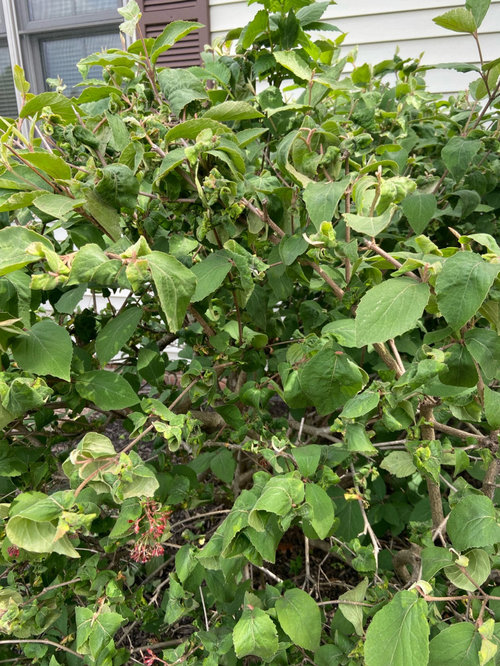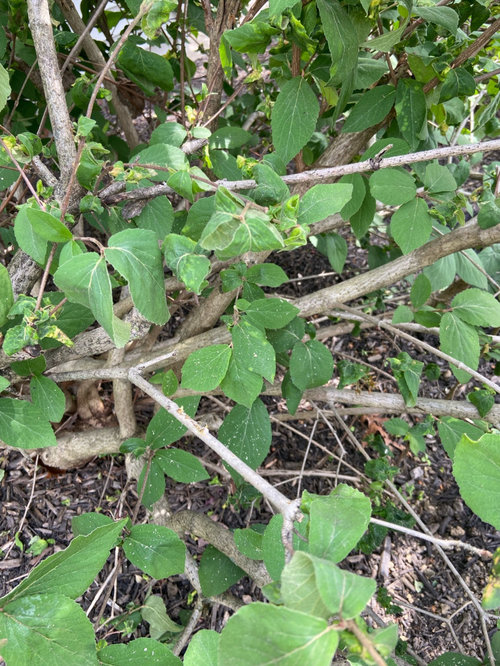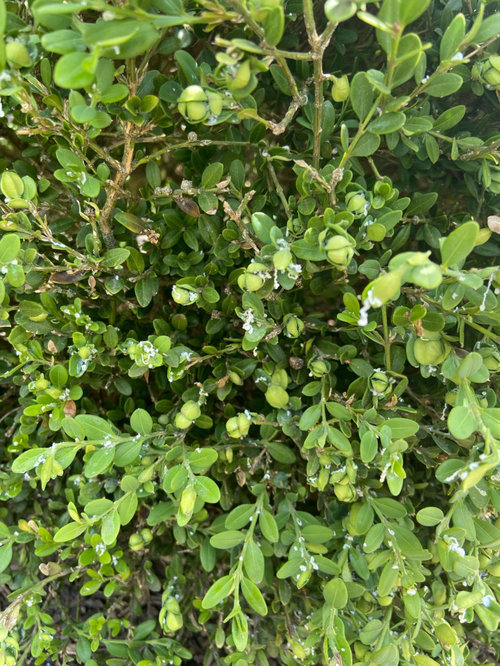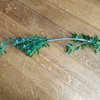25 year viburnums dying!
Lisa
2 years ago
Featured Answer
Comments (19)
Marie Tulin
2 years agoLisa
2 years agoRelated Discussions
Judd Viburnum- The leaves on the viburnum started turning brown
Comments (3)Thank you for your quick response. Yes, it leaf out early in the spring during relatively high temp in Mar�12 and then got hit with cold temperature for few days. The leaves staring turning brown when the temp changed and I also applied fert spikes just before the cold temp. I will stick to your watering instructions as I read somewhere that watering once a week might help washing extra fert away from the roots. Any other advice as I need to save it....Thanks Again!...See MoreViburnum
Comments (1)Trace the main branch back down and see if it's cracked or has sustained damage from whoever cuts the lawn. If there's no visible damage and the branch is actually a trunk, you may have some underground pest that's killing that particular plant. Yank it out immediately....See MoreSweet Viburnum dying....Help!
Comments (1)I do not know. I would call my county agent....See MoreConcerned if my 25+ year old JM is dying
Comments (1)If the branches don't leaf out prune them off. It might just be selective dying, things happen when something gets old. Here is a link that might be useful: Propagating Perennials...See Moregardengal48 (PNW Z8/9)
2 years agoken_adrian Adrian MI cold Z5
2 years agoken_adrian Adrian MI cold Z5
2 years agogardengal48 (PNW Z8/9)
2 years agoLisa
2 years agoLisa
2 years agoMarie Tulin
2 years agoLisa
2 years agobengz6westmd
2 years agoLisa
2 years agoViburnumValley central KY Bluegrass z6
2 years agomaackia
2 years agolast modified: 2 years agoViburnumValley central KY Bluegrass z6
2 years agobengz6westmd
2 years agolast modified: 2 years agomaackia
2 years agoMarie Tulin
2 years ago
Related Stories

DECORATING GUIDES25 Design Trends Coming to Homes Near You in 2016
From black stainless steel appliances to outdoor fabrics used indoors, these design ideas will be gaining steam in the new year
Full Story
ORGANIZING10 Things to Remember While Decluttering in the New Year
Fast-track the process and ease the stress by making a plan before you begin
Full Story
GARDENING GUIDES8 Native Shrubs for Year-Round Bird Feeding
It’s not just about berries. These plants provide insects for birds and seasonal interest for gardeners
Full Story
THE HARDWORKING HOME8 Laundry Room Ideas to Watch For This Year
The Hardworking Home: A look at the most popular laundry photos in 2014 hints that dog beds, drying racks and stackable units will be key
Full Story
SMALL SPACESLife Lessons From 10 Years of Living in 84 Square Feet
Dee Williams was looking for a richer life. She found it by moving into a very tiny house
Full Story
NATIVE PLANTS5 Ways to Keep Your Native Plant Garden Looking Good All Year
It’s all about planning ahead, using sustainable practices and accepting plants as living organisms
Full Story
MOST POPULAR25 of the Most Popular Homes on Houzz
‘Small,’ ‘charming’ and ‘efficient’ seem to describe some of the most viewed home tours featured on Houzz
Full Story
FALL AND THANKSGIVINGTake a Last Leaf-Peeping Trip With These 25 Postcards of Fall
Readers from across the country, and the world, share seasonal views from their front yards, backyards and beyond
Full Story
GARDENING 101How to Start a Cut Flower Garden for Beautiful Bouquets All Year
Flower farmer Erin Benzakein shows us how to grow fresh seasonal flowers the most satisfying way: by seed
Full Story
DECLUTTERINGYour Clutter-Clearing Plan for the New Year
Tackle these tasks month by month for a decluttering strategy that will really pay off
Full Story








ViburnumValley central KY Bluegrass z6